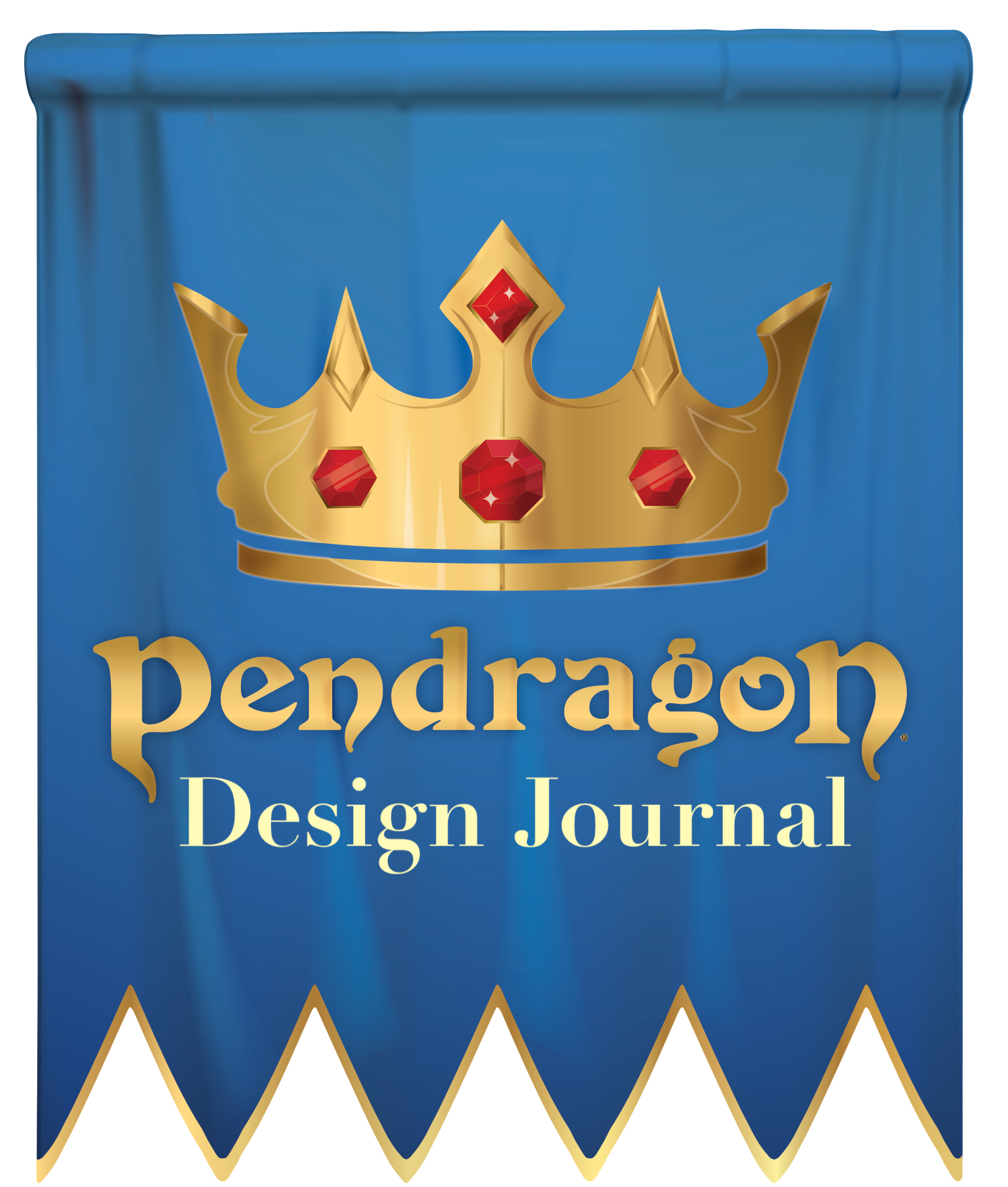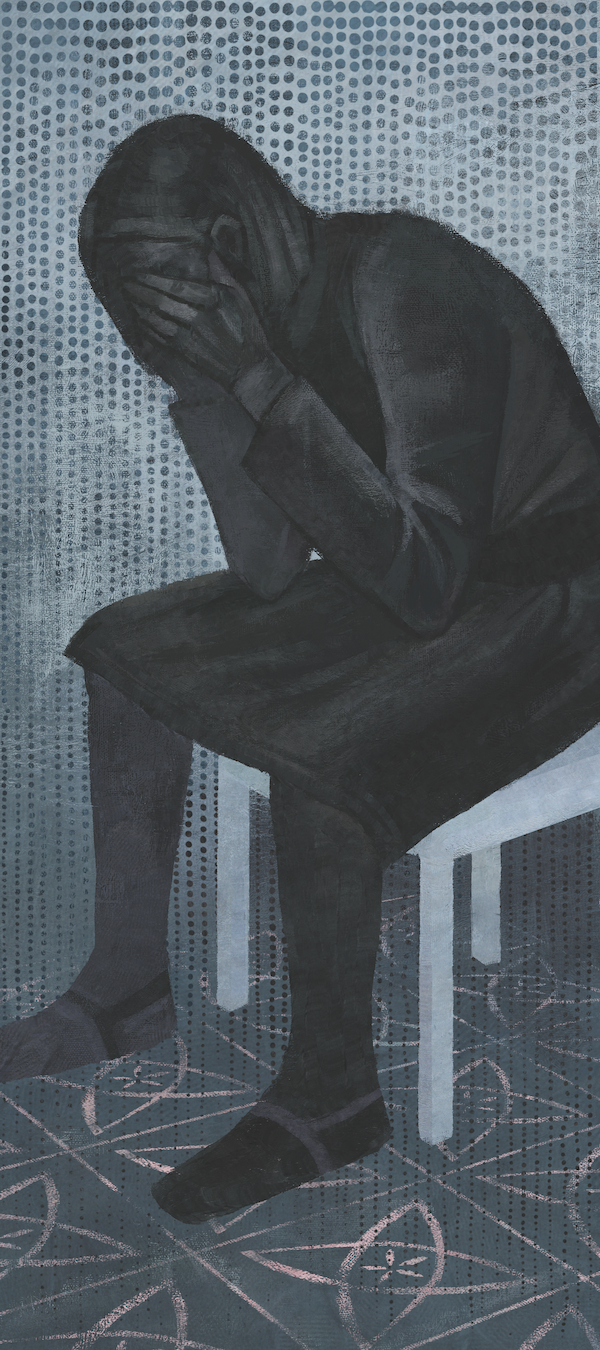Pendragon Design Journal #4: Refining Traits and Passions
Posted by Michael O'Brien on 30th Nov 2021

By David Larkins, Pendragon line editor.
A new edition of the Pendragon RPG is coming! The intention of this series of design journals by Pendragon line editor David Larkins is to trace the path of development, starting in the early 1980s and culminating with the forthcoming new edition of the Pendragon RPG, which will be first to be wholly published by Chaosium in a quarter-century.
- Pendragon Design Journal #1: Where It All Began
- Pendragon Design Journal #2: Bringing the Light
- Pendragon Design Journal #3: A Modular Approach
As we have seen in earlier installments of this very Design Journal, Pendragon 6th edition was over a decade in the making. Greg Stafford dubbed it his “Ultimate Edition.” So what exactly did he mean by that?
To answer that question, let’s spend some time this month and in the next few installments looking at how he tweaked and modified the core mechanics of the game, starting with how Traits and Passions work in 6th edition.
The Trait and Passion systems, it is fair to say, stand as Pendragon’s most notable mechanical innovations. For those of you less familiar with the game, a quick review: Traits define your character’s personality in terms of values and behavior, and are expressed as a set of 13 matched pairs, while Passions measure your character’s strongly-held beliefs and emotional triggers. It is through the twin engines of Traits and Passions that your Pendragon character accomplishes great and memorable deeds—or gets in over their head… Either way, much dramatic fun ensues!
Longtime Pendragon fans will be pleased to know that Traits and Passions work much the same as always. Traits, in particular, have hardly changed. (Why mess with perfection?) A critical success or fumble on a Trait roll may, at the Gamemaster’s discretion, now grant a +5 bonus to a subsequent Skill roll, but for the most part Greg strove for increased clarity in describing when to make Trait rolls and how to apply them in the game and left things at that.
Directed Traits function the same as always, though it is now possible to acquire Obsessions—a sort of hyper-Directed Trait (such as Fear and Jealousy) that significantly boosts a particular Trait (Cowardly and Suspicious, respectively).
Passions, on the other hand, received a few mechanical tweaks, all reflections of Greg’s thinking with regard to the types of boons and banes generated by Passion use in the game.
First of all, if you have played earlier editions of Pendragon, you will note the appearance of some new Passions: Station, for example, and Chivalry. Other Passions that were introduced in 5th edition’s supplemental material, such as Homage and Fealty, are now elevated to core status.
More significantly, Passion values now interact with each other to an extent. Passions are divided into four courts, or categories: Fidelity, Fervor, Adoration, and Civility. The total value of all Passions in a court may never exceed 40. So, for example, if you have two Hate Passions of 15 and one Love Passion of 10 (all of which belong to the Court of Fervor), that equals 40 points total in that court—meaning when any of those three Passions go up a point during the Winter Phase, the Player must reduce one of the other two by one point as well in order not to go over 40.
This cap on Passion totals is offset by the fact that Passion values in 6th edition tend to start a little lower than previously. This is because the penalties for a failed Passion roll now scale with the value of the Passion. A particularly low Passion is unlikely to cause Melancholy or Madness on a failed roll, and in the event of such a fate the duration of the affliction is much shorter, so lower Passion values are not the problem they were in earlier editions.
All of this points to a couple of Greg’s design goals with the new edition: get folks to focus on a smaller number of character-defining Passions, and to encourage rolling for inspiration even with lower-rated Passions.
Madness or Melancholy may also be triggered in 6th edition through game events. For example, losing the source of a Directed Passion (that is, a Passion that refers to a specific person)—a beloved spouse dies, you are banished by your lord, and so forth—can easily trigger a crisis that leads to years of wandering in the wilderness as a mad hermit!
Finally, in another change those familiar with earlier editions of Pendragon will note, the bonus conferred from inspiration has gone from +10/+20 to +5/+10. This means that a regular success on a Passion roll significantly boosts a character’s chances of success, but a critical success essentially guarantees the win, particularly against non-inspired opponents. (Oh, and tied critical successes in combat now inflict regular weapon damage against each opponent.) The one exception to this is the Adoration Passion taken by romantic knights; this Passion, which may be invoked at any time by simply thinking of the Beloved, grants a +10 bonus on any success! This helps place the ideal of Romance on par with Chivalry and Religion in desirability—knights will very much want to find a chaste amor to moon over! (Failed Adoration rolls, it should be noted, do cause a special kind of Affliction called Misery in addition any Melancholy or Madness incurred.)
Over the course of years of revision, refinement, discussion, and playtesting, all of these changes, and may others, left Greg satisfied that he had at least achieved his final vision for the game, a process started so long ago in his marginalia of Le Morte d’Arthur. The one system he hadn’t quite nailed down to his satisfaction at the time of his passing was a revised Battle mechanic, and we’ll be taking a look at how we took his notes and rough draft and shaped it into a new system in a future installment.
Next month, however, we are going to put a spotlight on the other core Pendragon mechanics of Honor and Glory.
Until next time!

